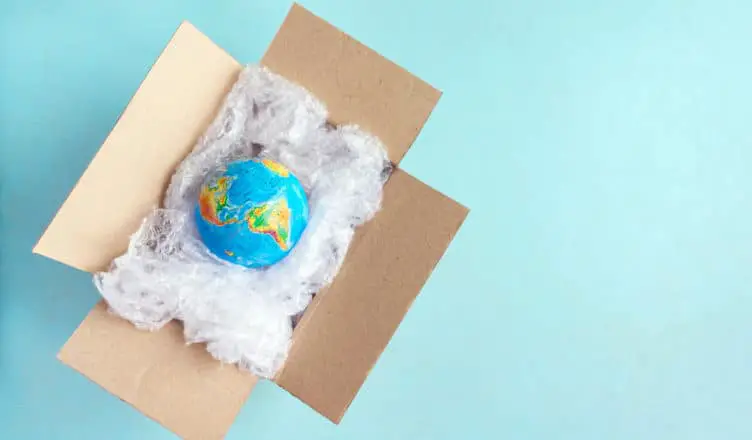At the end of the financial year, you more than likely did an audit on your waste packaging, or just your packaging usage, and generated a report.
The numbers that you saw probably shocked you.
They would have shown just how much packaging your company has used in the past year.
Of course, the packaging is necessary, and you can’t get away from it. It protects your goods.
However, there may be options you can explore that protect your products while making use of fewer materials.
Shaun Bryce of melbpack.com.au shares his more than 20 years of experience with us and provides some insightful ways you can reduce your packaging use.
1 Cut down on the stretch wrap
Stretch wrap is a popular packaging solution across multiple industries.
If you use it, there are simple ways you can target the reduction.
For example, a low micron performance machine applied film can give you the same load containment that you would get from a higher micron stretch. It can do this, with fewer wraps too, which instantly cuts down on the weight of film used to wrap each pallet.
The software can also be engaged to make sure your wrapping machine is optimized. This means you can control what you are wrapping using the minimum material.
If your business is currently hand wrapping more than 15 pallets a day, switching to a machine will make all the difference. Stretch wrap automation will make sure the wrap is stretched to capacity before it is applied. This instantly reduces the material used per wrap of each pallet.
Ask a professional to analyze your business needs and recommend a solution that will give you optimal load stability. They will do this by scrutinizing your pallet profiles, weights, and wrapping machines.
The benefits of machine wrapping are twofold. You make savings because you need less material to get the job done. There is also less material required, which is beneficial to the environment.
2 Look at re-engineering boxes
If you are using the same size boxes to pack all your products, you should relook this instantly.
By using boxes that properly fit the items they are protecting while being shipped, you will cut down the size of each shipment, because you can get more on a pallet.
Less to ship means fewer delivery vehicles on the roads. You’ll also need less protective material for void fill in oversized boxes. All these factors reduce your company’s carbon footprint.
Another factor it may be worthwhile exploring is the board grade and fluting used, as they can affect the size of the box you need.
You may not need a double-wall, for example. Progress in the design of the corrugated board means that single wall boards could provide your products with the same protection as double wall material. This is an easy way to instantly take down the size and weight of the packaging you are using.
Again, if you’re unsure of the next step to take ask a packaging professional to help you find the best solution that is fit for purpose and offers adequate protection for your products.
3. Prioritize packing tape
Did you know gummed paper can be recycled with the corrugate board without needing to be removed?
If this environment-friendly factor isn’t enough to convince you, then consider this. Gummed paper forms a strong seal, which means you require less material to get the job done.
It even cuts out the need for H tape boxes.
An automated gummed paper dispenser dispenses pre-programmed lengths. The value of this comes down to optimizing the material you use and reducing waste.
4. Power up protective packaging
Paper void fill is popular because it protects products and can be easily recycled when the goods are received.
But again, you want to use as little as necessary as this is an overhead cost your business has to carry.
Look into the die-cutting paper with small slits in it, so it stretches the paper.
There are automated machines in the market that can take this out of your hands, so you ultimately need fewer papers to ensure the same protection factor.
Air-filled protective packaging is also a popular option as it can be deflated easily for recycling or can be reused.
5. Personalize your packaging
Consider this. If you are buying standard size pallet edge protectors and are having to cut them down to fit non-standard pallet heights, think how much material you’re wasting.
It’s also labor-intensive, and you have to recycle unnecessary waste. Switching to made-to-measure packaging will solve this.
The bottom line is that reducing the amount of packaging you use pays off both financially and can be an eco-friendlier option.
Each of these five solutions could have a positive impact on both.






